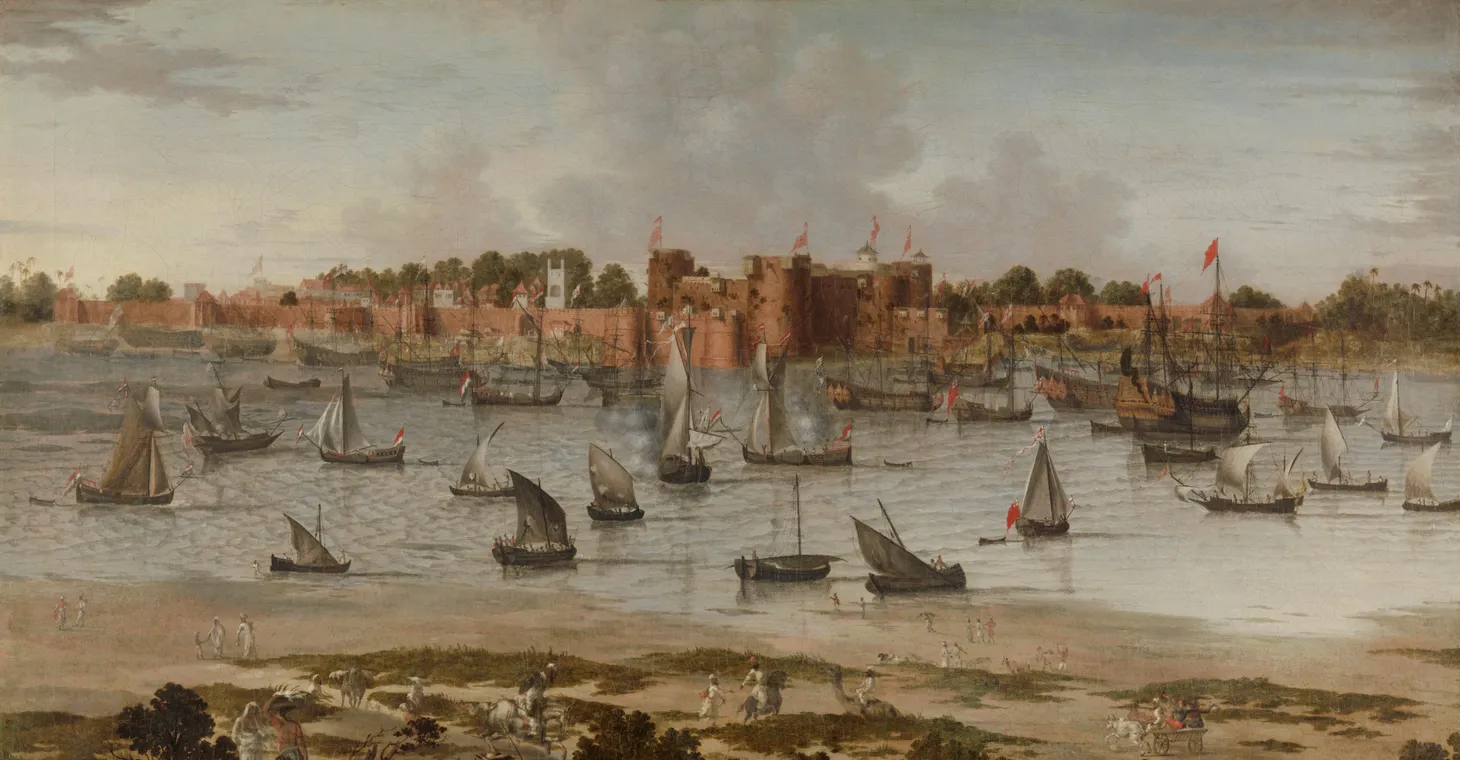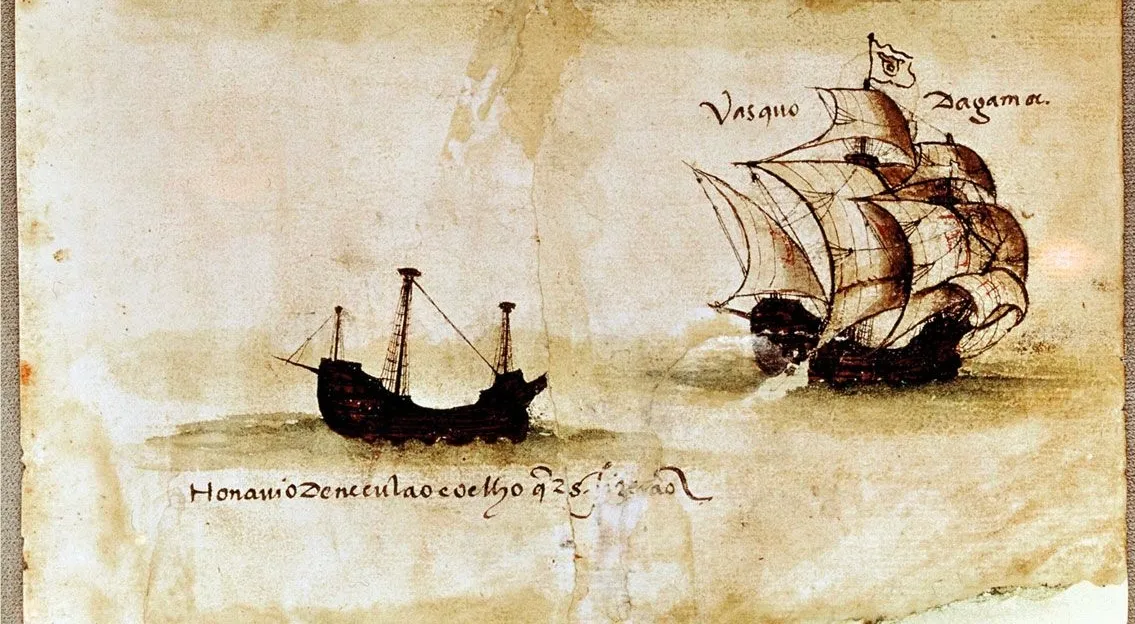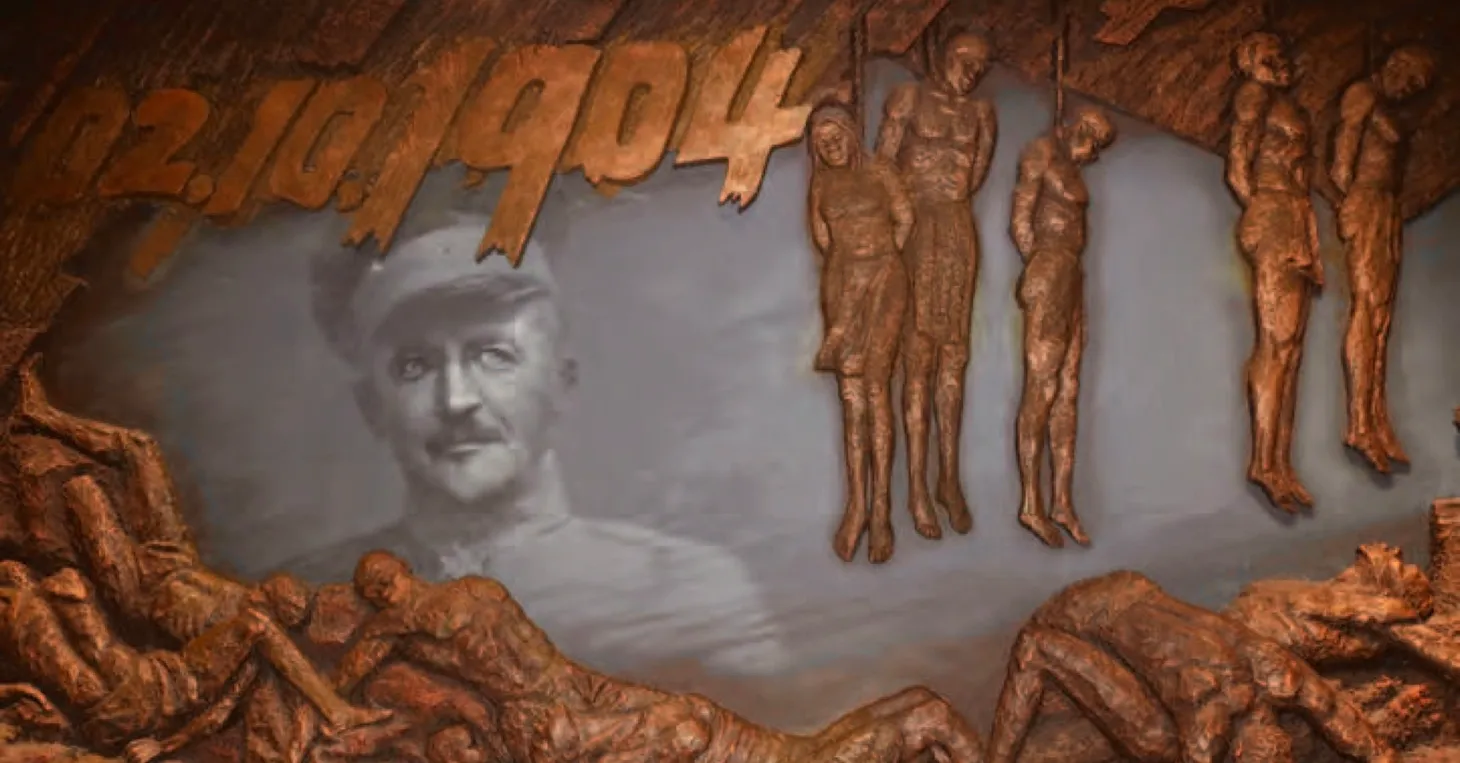“Everything is Found in Zanzibar”: East Africa, Zanzibar, and World History in the Nineteenth Century
Discussion of teaching nineteenth-century East Africa and Zanzibar
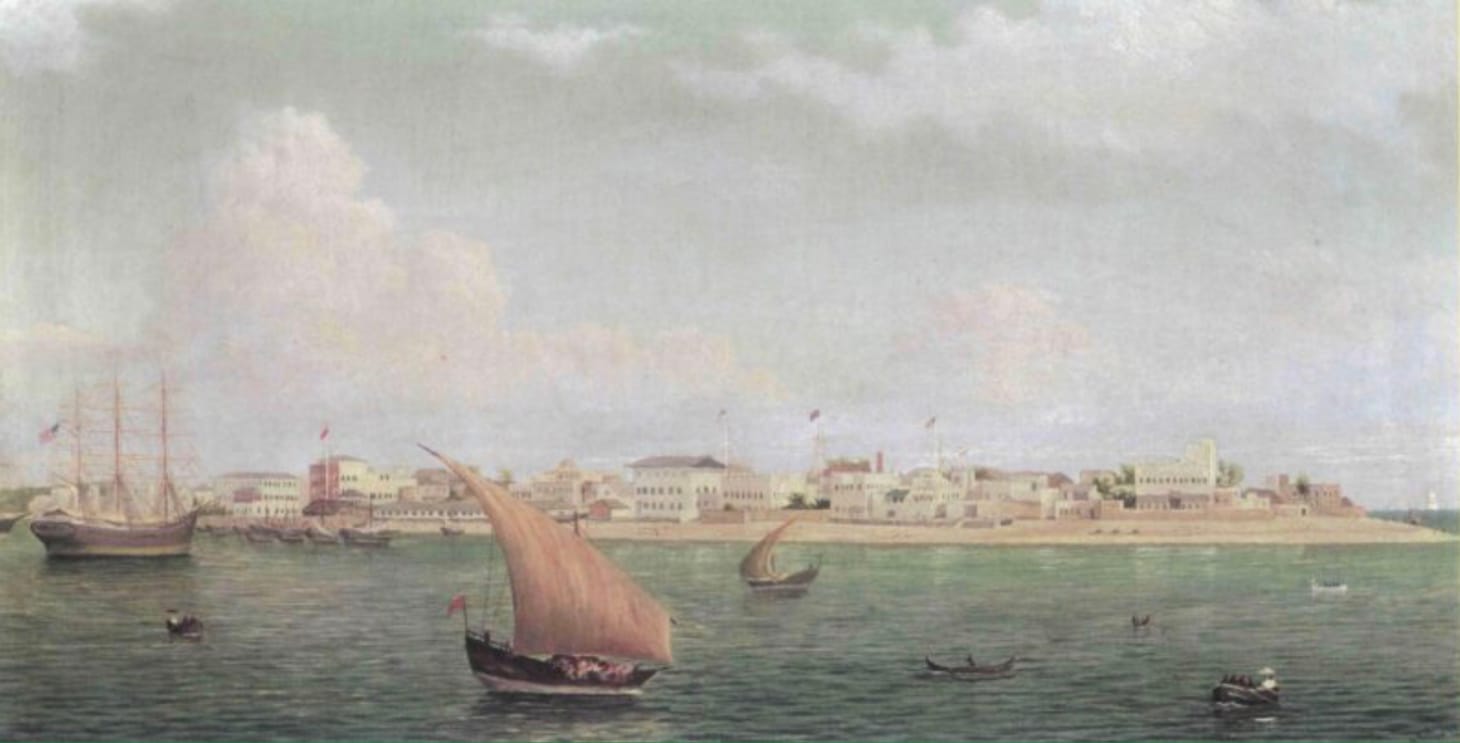
The integration of the global economy by 1900 is a recurring theme in world history textbooks. Authors might use different examples, but the narrative is roughly the same in many textbooks. The story typically focuses on how industrial Western states used imperialism to forcibly integrate people around the world into a European-dominated global economy. We increasingly recognize that Africans, Asians, and Latin Americans made choices about how to adapt to this Eurocentric global economy, but those same people rarely appear as the protagonists. The protagonists in our nineteenth-century story are almost always White European men. Think Cecil Rhodes, Stamford Raffles, or Theodore Roosevelt. Textbooks often include maps to show how trade moved finished goods from the Atlantic core in exchange for raw materials from the rest of the world. My favorite version of this map appears below. I’ve used this map countless times in class and on Liberating Narratives.
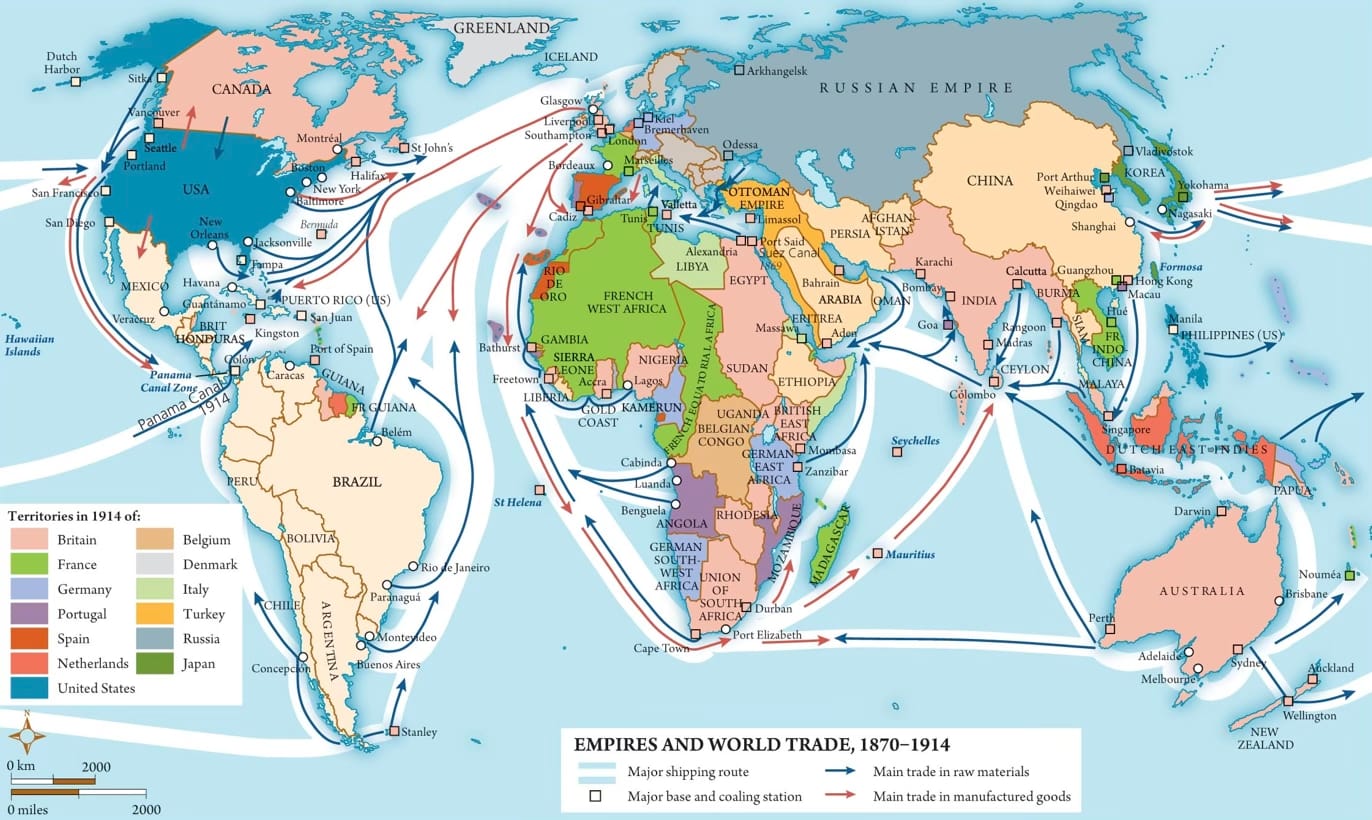
This story of Europeans and Americans forcibly integrating the global economy often ends in 1900 or 1914. New Imperialism is a critical chapter in this narrative. The subtext is that Europeans utilized their overwhelming manufacturing capabilities and military technology to outmaneuver their rivals. Think the Nemesis and the First Opium War leading to the “opening” of China; Commodore Matthew Perry in Japan with American warships; or the Maxim machine gun across Africa. Reluctant Africans and Asians were holding on to an outdated vision of the world and trade, and it’s only because of the European threat that a handful of Africans and Asians adapted to European expectations. The rest were simply the victims of European exploitation.
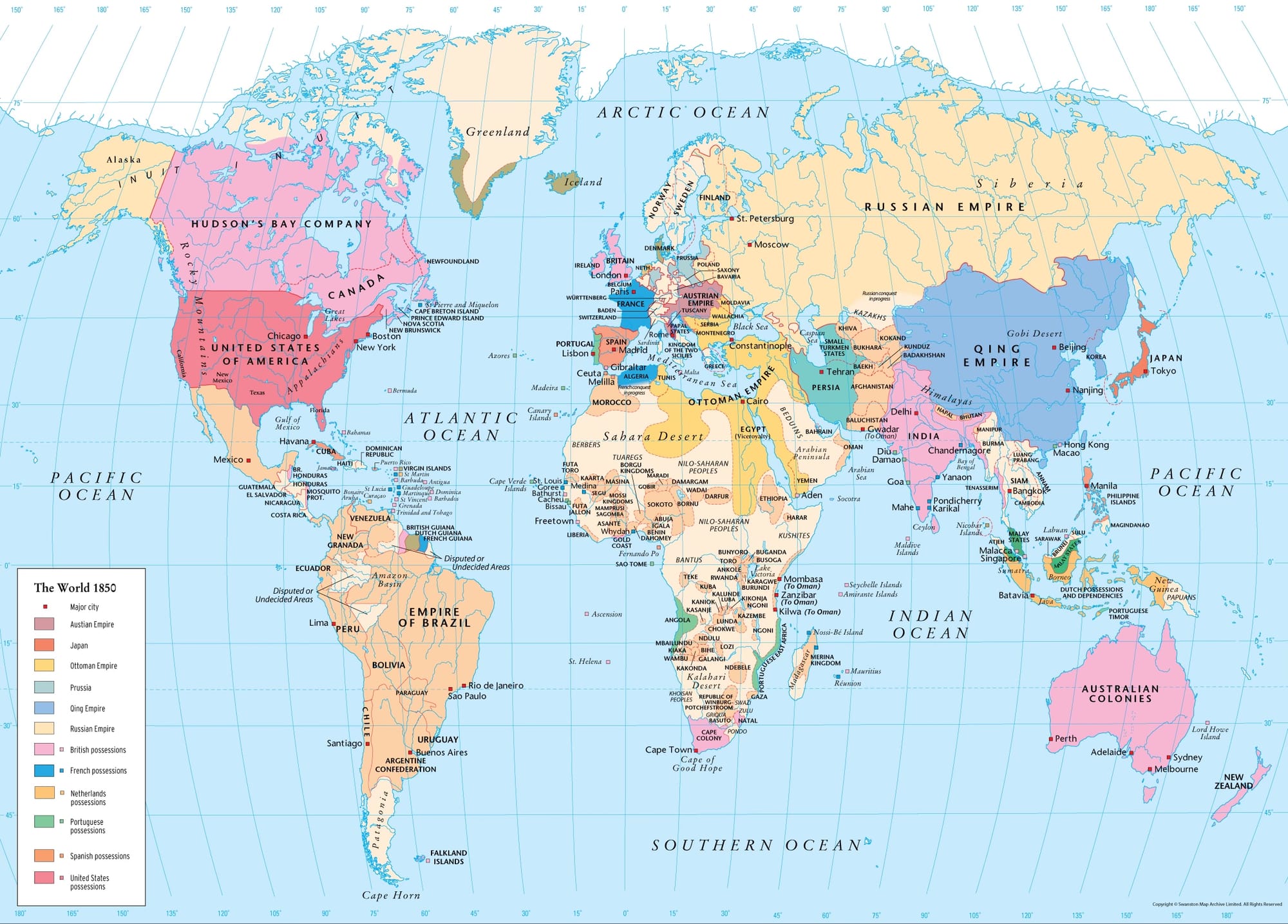
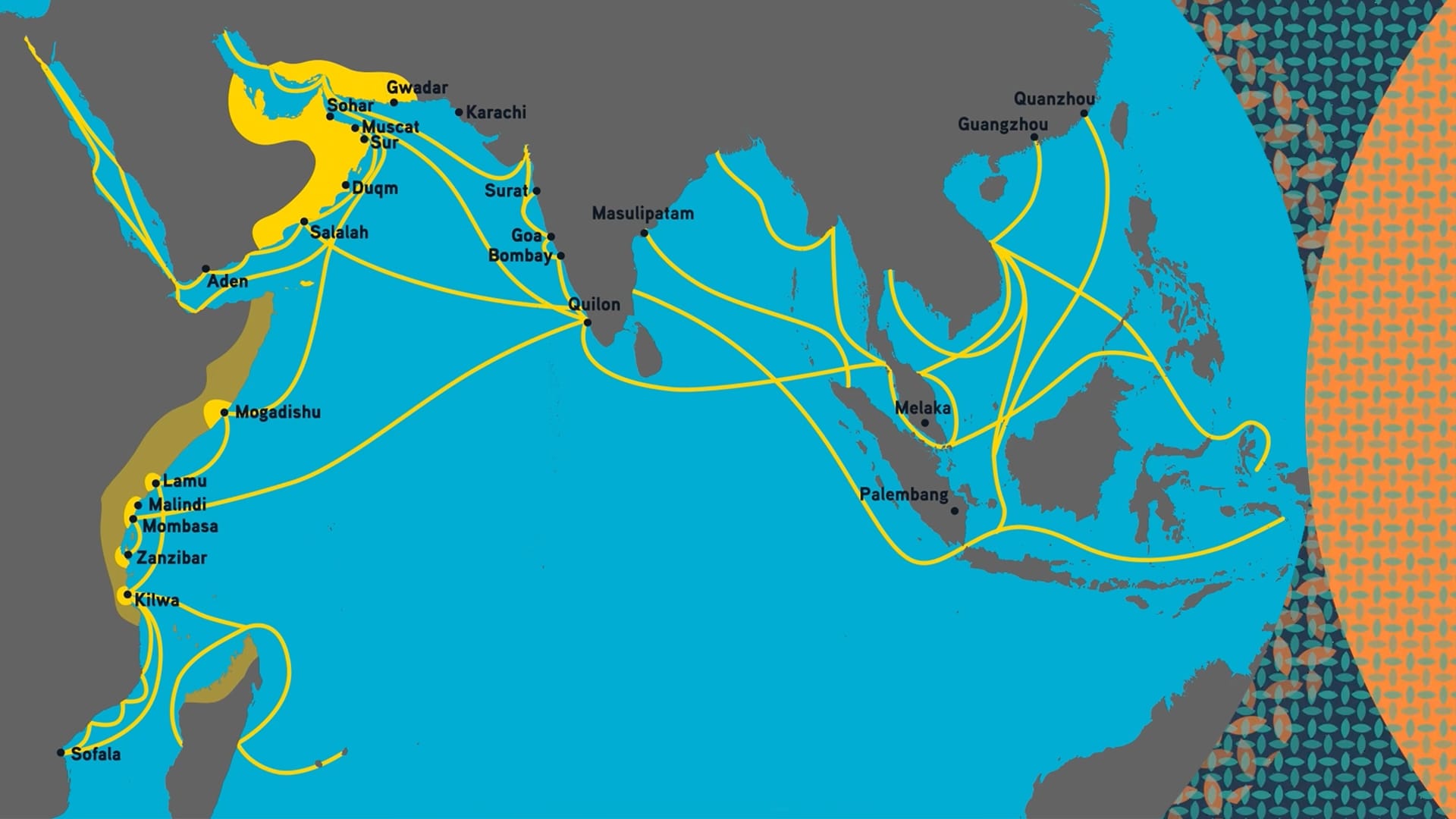
Left: The World in 1850. Source: The Map Archive. Right: The Omani Empire in yellow with its trade connections across the Indian Ocean, c.1850. Source: OER Project.
But what happens to this Eurocentric narrative if we stop in 1850 and look at the world on the eve of New Imperialism? Europeans had some colonies around the world, but the map looked quite different. It wasn’t just that Europeans controlled less territory; it was also the surprising Omani Empire. Not only did the Omani Empire span parts of South Asia, the Middle East, and East Africa, but its capital was also Zanzibar. I’ve written briefly about the Omani Empire before, but I didn’t focus on Zanzibar.
In the mid-nineteenth century, Zanzibar was at the center of a global trade network that stretched from Salem, Massachusetts, to Southeast Asia. Omanis dominated the Western Indian, and everything connected back to Zanzibar. By focusing on mid-nineteenth-century Zanzibar, we can see how Arabs, East Africans, and South Asians transformed the island into a hub of East African trade, further integrated the Western Indian Ocean, and fostered new connections between the Atlantic and Indian Ocean trade networks. Slavery and the slave trade were critical to this process.
How Did Zanzibar Become the Capital of the Omani Empire? And What was the Omani Empire?
This content is for Paid Members
Unlock full access to Liberating Narratives and see the entire library of members-only content.
SubscribeAlready have an account? Log in

